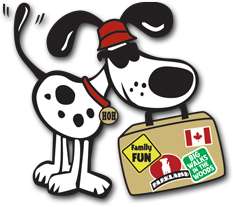Bold Strokes: Brushing Your Dog’s Teeth
Wish your pooch could pop a breath mint? Better step up his dental care. Contrary to popular belief, dog breath isn’t supposed to stink. If it does, it could be a sign of gum disease.
To keep Max’s mouth in optimal health, the best thing you can do is brush, brush, brush.
Like their human companions, dogs can have gingivitis, receding gums, and even tooth loss from too much tartar buildup, so regular cleanings are a must. To make the experience go as smoothly as possible, follow these simple steps:
Buy the right brush: Get a doggie toothbrush, which is smaller and has softer bristles. You can also opt for one that fits right over your fingertips. For toothpaste, buy one that’s made specifically for your furry friend -- the human stuff can upset their tummies.
Prepare your pal: To get your dog comfortable with having his mouth touched, gently massage his lips. Next, dab them with a little toothpaste so he’ll get accustomed to the taste. (See if he’ll lick some off your fingers; if he does, reward him with a treat!)
Make your move: Gently lift up his lips, and hold the brush to his teeth at a 45-degree angle. Using small strokes, start by cleaning the upper canines, then finish the rest from top to bottom. Don’t fret about brushing the tooth’s inner surface -- doing the front is enough to tackle tartar.
Along with home brushing, your vet may recommend regular professional cleanings. Clean teeth and healthy gums can add approximately 3-5 years to your dog's life!


 | 2012/4 (1) | 2010/9 (2) | 2010/4 (3) |
| 2012/4 (1) | 2010/9 (2) | 2010/4 (3) |


